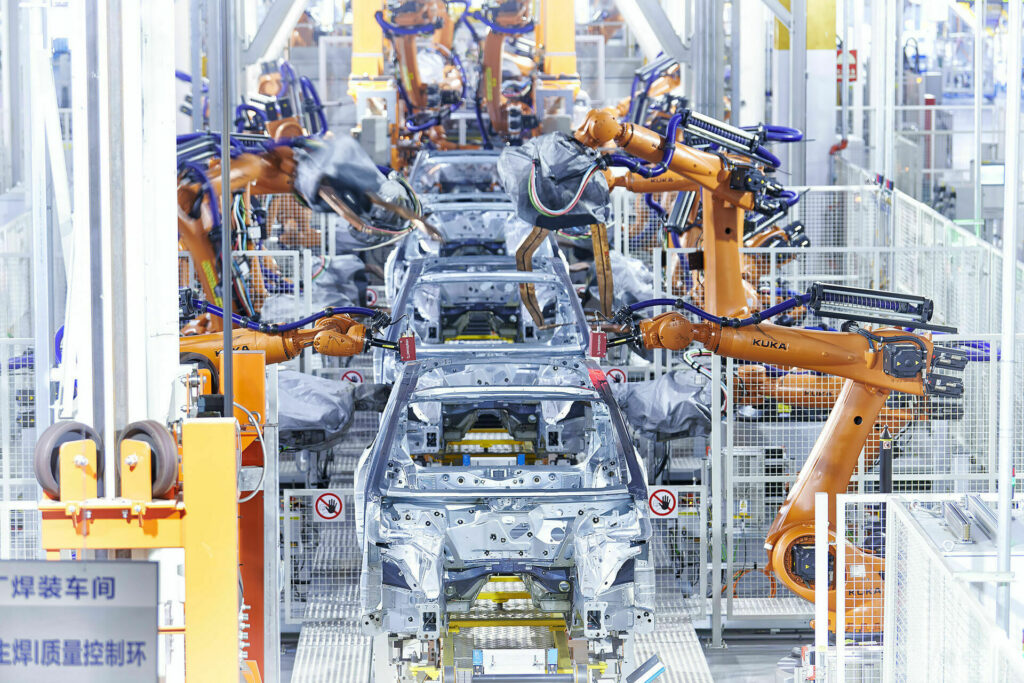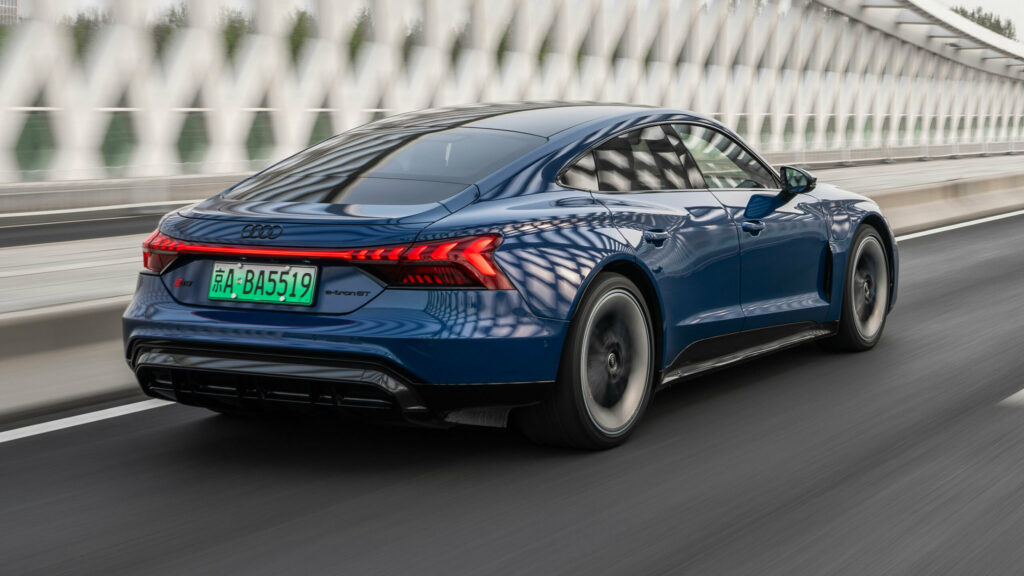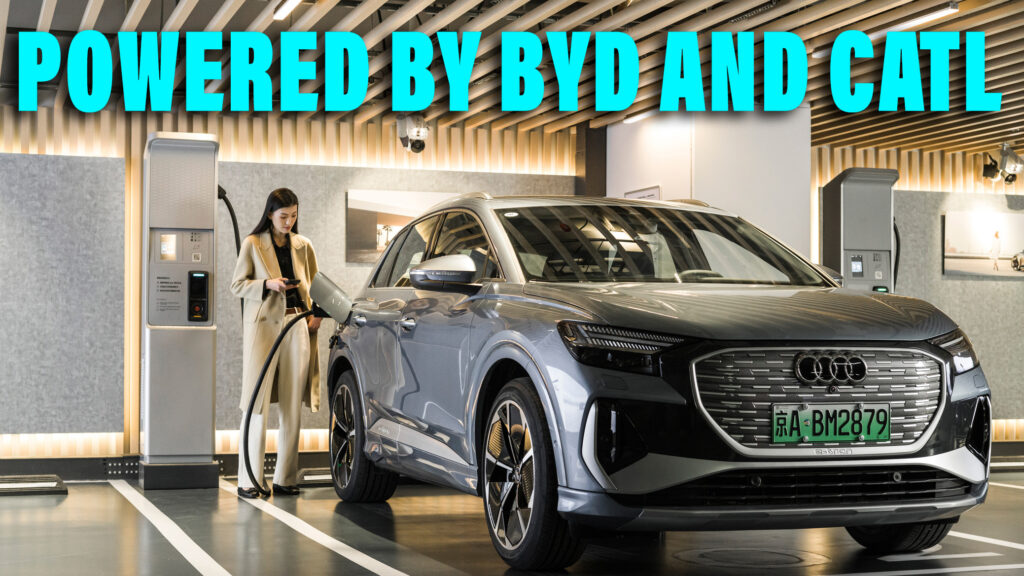All-electric Audi models to be produced in China through the company’s joint venture partnership with FAW will use battery packs supplied by BYD and CATL.
The German carmaker will locally assemble the Q6 L e-tron, Q6 L Sportback e-tron, and A6 L e-tron, each differentiated from the regular models due to their extended wheelbases. It is understood that Audi will use BYD’s lithium-ion phosphate in lower trim levels while CATL’s most expensive and higher-energy density NMC batteries will be used by higher-end models. These cells use nickel manganese cobalt chemistry with a graphite anode.
Car News China notes that local production of these three models will be handled by a joint venture factory currently being constructed with FAW. This €2.6 billion / $2.8 billion (20 billion yuan) facility in Changchun, Jilin province, will spawn 2.46 million square meters and have an annual production capacity of 150,000 vehicles. Work at the site is expected to be completed in December 2024 and production should start soon after with the Q6 L e-tron.
Read: This Is Everything You Wanted To Know About The Audi Q8 E-Tron

Underpinning EVs being built at this site will be the Premium Platform Electric (PPE) architecture that Audi developed alongside Porsche.
Audi is adopting a two-pronged approach to the Chinese market. In addition to selling EVs underpinned by the PPE architecture, it announced a partnership with SAIC earlier this year that will see it adopt the iO Origin platform by IM Motors for some of its electric vehicles. This platform is currently used by the IM Motors L7 sedan and LS7 SUV and accommodates wheelbases ranging from 2,800 mm (110 inches) to 3,200 mm (126 inches). The platform also has an advanced 800-volt electrical architecture. It is not yet clear which new Audi EVs will use this platform.




